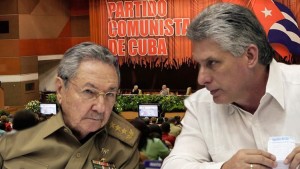Carlos Sánchez Berzaín
December 28, 2018
 (Interamerican Institute for Democracy) After 60 years of dictatorship in Cuba, the criminal aftermath the Castroist regime causes is extreme and remains unpunished. The massacre and subjugation of its people, executions by firing squads, imprisonments, millions of exiles, destabilization, invasions, urban and rural guerrillas, terrorism, narcotics’ trafficking, assassinations, torture, human trafficking, discrediting and assassination of reputations, conspiracies, operations against international peace and security. There isn’t one crime, whether it be a common crime, political crime, or a crime against humanity, that Fidel Castro and members of his regime have not committed and continue to commit. As long as Cuba remains a dictatorship, the people, the nations, the governments, and the countries of the Americas will be endangered.
(Interamerican Institute for Democracy) After 60 years of dictatorship in Cuba, the criminal aftermath the Castroist regime causes is extreme and remains unpunished. The massacre and subjugation of its people, executions by firing squads, imprisonments, millions of exiles, destabilization, invasions, urban and rural guerrillas, terrorism, narcotics’ trafficking, assassinations, torture, human trafficking, discrediting and assassination of reputations, conspiracies, operations against international peace and security. There isn’t one crime, whether it be a common crime, political crime, or a crime against humanity, that Fidel Castro and members of his regime have not committed and continue to commit. As long as Cuba remains a dictatorship, the people, the nations, the governments, and the countries of the Americas will be endangered.
Cuba’s dictatorship is the de-facto regime that took over Havana on the 1st of January of 1959, it is sustained by force and violence and had concentrated all power in Fidel Castro who governed until 31 July of 2006 when, due to illness, deteriorating health, and old age, transferred all power to his brother Raul Castro. On the 18th of April of 2018, the regime started a new dictatorial transition scheme by designating as “President” an individual named Miguel Diaz-Canel, thus placing underway a reform to its dictatorial constitution. Cuba’s dictatorship today controls the dictatorships in Venezuela, Nicaragua, and Bolivia.
As an acknowledgement of its dangerousness, on the 31st of January of 1962 Cuba was expelled from the Organization of American States (OAS) because its membership was “incompatible” with the Inter-American system. On 3 June of 2009 at the initiative of Venezuela, Ecuador, Bolivia, Nicaragua, and Honduras, the OAS retracted on Cuba’s expulsion and invited it back, but Cuba has not returned.
In 1961, Cuba’s dictatorship birthed; Nicaragua’s National Liberation Army (ELN)* afterwards converted into the Sandinista National Liberation Front (FSLN), then later converted into 13th of November Revolutionary Movement (MR13N), and the Revolutionary Armed Forces (FAR) in Guatemala. In 1962, it birthed Venezuela’s National Liberation Armed Forces (FALN), the Colombian Self Defense Forces turned into the Southern Block Forces afterwards turned into the Colombian Revolutionary Armed Forces (FARC). In Peru, it birthed the National Liberation Army (ELN) and the Leftist Revolutionary Movement (MIR), in Bolivia the National Liberation Army (ELN), in Uruguay the Tupamarus, as an urban guerrilla, in Argentina the Montoneros, and in the 70’s the People’s Revolutionary Army (ERP), in Brazil the Revolutionary Movement 8 (MR8), and many more. Practically, the Castroist movement did not spare any one single country from staining it with blood with the guerrillas.
The “missile crisis” that started on 15 October of 1962 by the U.S. discovery of Soviet bases for the launching of Soviet intermediate range nuclear missiles from Cuba’s territory, revealed how far the Cuban dictatorship was willing to go to take the world to a nuclear war that was avoided through an agreement -unknown to Fidel Castro- between the Soviet Premier Nikita Khrushchev and President John F. Kennedy. History shows that the dictator Castro and his regime promoted this nuclear aggression. Che Guevara wrote about this to be “a chilling example of a nation that is willing to atomically sacrifice itself so that its ashes may be the foundation of new societies”.
In the decades of the 70’s and 80’s they converted the guerrillas into terrorism involved in narcotics’ trafficking, kidnapping, and extortion, with Colombia’s FARC as the most noteworthy case. Castro’s involvement with narcotics’ trafficking is well documented, including his relationship with Pablo Escobar. Facing the disappearance of the Soviet Union and the fall of the Berlin wall, they organized the Forum of Sao Paolo and Hugo Chavez saved them from further going under in “the special period” in 1999 birthing what we now know as the “Castroist Chavist” doctrine with which they recurrently commit and multiply their crimes in Venezuela, Nicaragua, and Bolivia, and threaten the entire region.
Recently, on the 7th of December of 2018, the OAS held a Conference on Human Rights in Cuba, in which Secretary General Almagro rightfully declared that “as long as Cuba is a dictatorship, persecuting, torturing, and silencing its people and teaching others to persecute, to assassinate, to torture and to silence, we cannot have a hemisphere lacking of bad habits that affect freedom, democracy and peace”. Leaders from the Americas know this to be true, but many of them keep silence.
Cuba’s dictatorship is the greatest threat to the Americas, starting with the United States, its main enemy. Today, the Cuban regime jostles others with the presence of Russia, China and Iran in the region, with Islamic terrorism, with narcotics’ trafficking, with the migratory pressure, the destabilization of governments, the violation of human rights, with political prisoners, torture, exile, and all types of crime. They never stopped committing crimes and today they do so openly, directly and through its operators, the other dictators; Nicolas Maduro, Daniel Ortega, and Evo Morales.
*Attorney & Political Scientist. Director of the Interamerican Institute for Democracy.
Published in Spanish by Infobae.com on Sunday, December 23rd, 2018
Translated from Spanish by; Edgar L. Terrazas, member of the American Translators Association, ATA # 234680.
 Carlos Sanchez Berzain Abogado | Estadista | Político | Politólogo
Carlos Sanchez Berzain Abogado | Estadista | Político | Politólogo